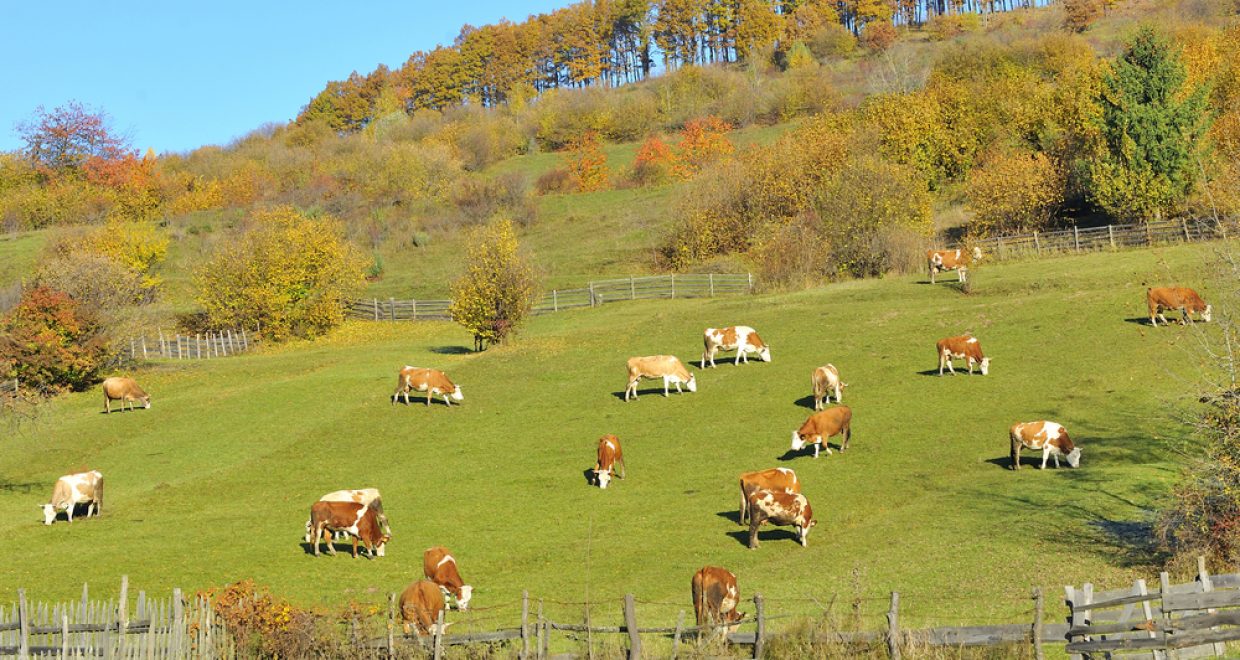Mixed crop-livestock farming systems: a sustainable way to produce beef?
Three articles have been selected as the animal Article of the Month for August. All three articles are taken from a special issue on Agroecology published in animal. The second is entitled ‘Mixed crop–livestock farming systems: a sustainable way to produce beef? Commercial farms results, questions and perspectives’
Mixed crop–livestock farming has gained broad consensus as an economically and environmentally sustainable farming system. But while such a farming system could ideally reduce both the inputs needed for production as well as fluxes of nutrients towards the atmosphere and hydrosphere, there seems to be a gap between the conceptual model and observations in commercial farms.
We therefore analysed the differences in structure and in drivers of technical, economic and environmental performances in a 66 farms network of the Charolais cattle area. Four groups were constituted: “specialized grassland farms” (specialized and 100% grassland-based conventional livestock farms; GF), “integrated crop-livestock farms” (specialized conventional farms that only market animal products and grow cereal crops to feed their animals), “mixed crop-livestock farms” (conventional farms that sell both beef and cereals; MC-L), and “organic farms”.
Mixed crop-livestock farms that sell crops alongside beef are bigger than specialized beef farms (with or without on-farm feed crop), so that their labour productivity is higher, but not their farm income per worker. The MC-L farms make heavier and consequently less efficient use of inputs and capital, which drags their environmental performances down (nitrogen balance, greenhouse gas emissions, and non-renewable energy consumption). The upshot is that MC-L farms are unable to translate an enlargement strategy into economies of scale and a mixed crop-livestock strategy into economies of scope, contrary to conceptual models predictions.
Specialized grassland farms (GF) have to purchase all their needed concentrates, and thus use less concentrate per kg of live weight produced. Grasslands management requires less chemical fertilizers and mechanization (fuel use) than annual crops. The environmental performance of GFs is thus better with the same economic results.
Organic farms could be considered as a prototype of a mixed crop-livestock system meeting the core principles of agroecology. Organic farms show a lower animal productivity, but they exploit more efficiently the diversity of feed resources (grassland, cereals, protein-rich plants). Their costs are very low, and they reach the best farm income per worker. The environmental performance per kg of live weight produced of these organic farms is comparable to those of conventional MC-L farms, but environmental impacts per ha of agricultural area are much lower.
Authors: P. Veysset, M. Lherm, D. Bébin, M. Roulenc
The animal Article of the Month is selected by the Editor-in-Chief and is freely available for one month








This article shows us comaparatively, the benefit of Mixed Crop – Livestock Farming Vs Specialised Livestock Farming very clearly. I think that MC-L system will be more beneficial in subsistance farming in developing countries where people solely rely on farming crop and animals for their livelihood while in developed countries, specialised farming are more in use for higher production of meat and milk so as to cope with the increasing demand.
OK ||||